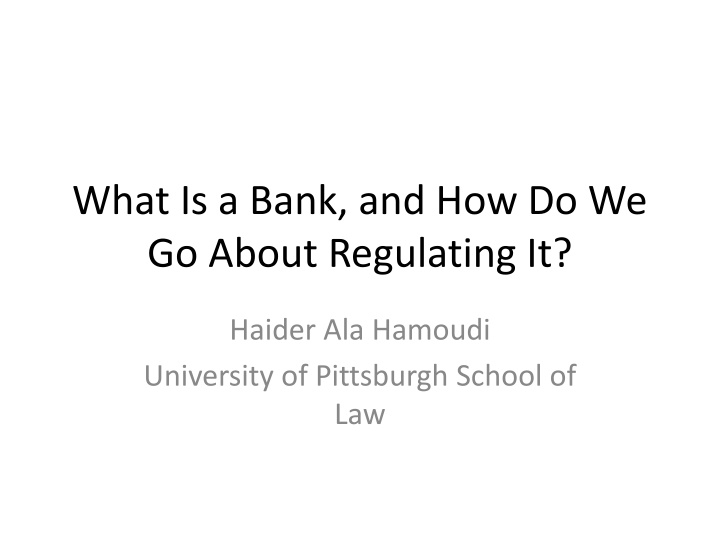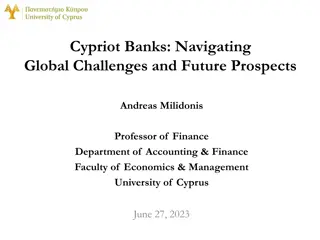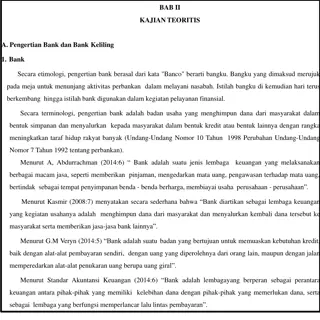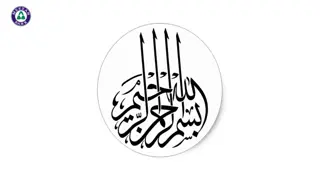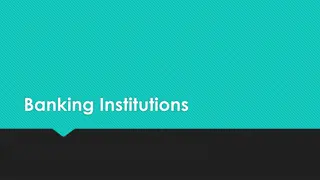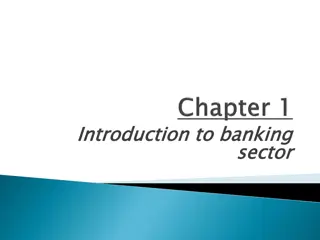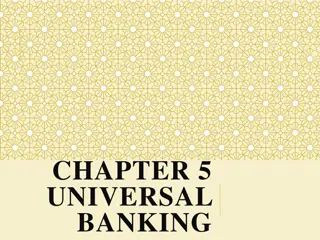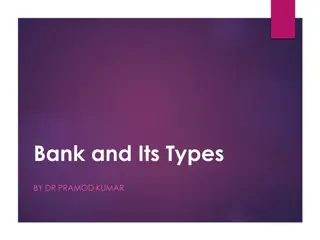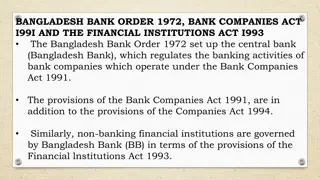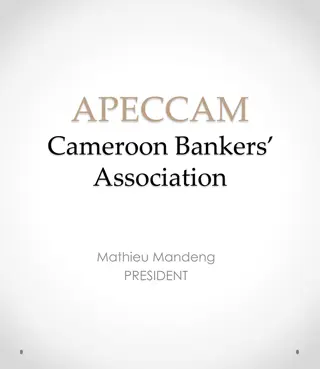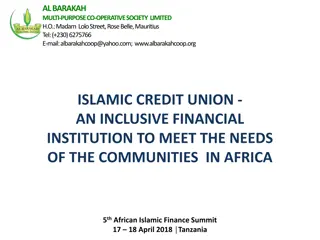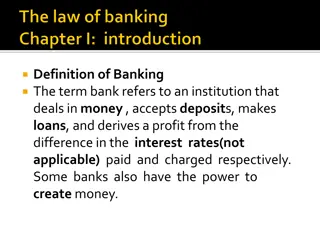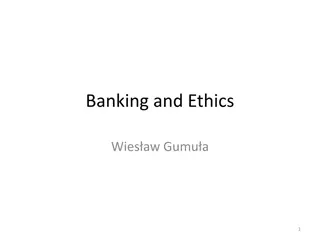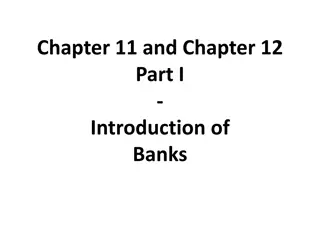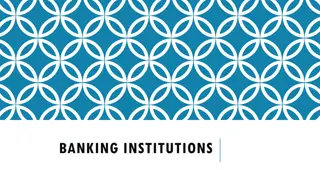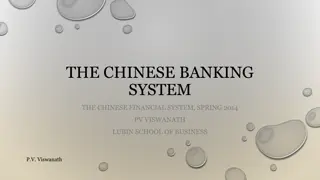Banking Regulation and Islamic Banks
Banking regulation is crucial to prevent market-wide dangers due to liquidity mismatches and to ensure the transmission of monetary policy. Islamic banks offer a different approach with equity-based models but face challenges in balancing debt-like instruments. The two-tiered Mudaraba model is idealized but often deviates due to economic realities.
Download Presentation

Please find below an Image/Link to download the presentation.
The content on the website is provided AS IS for your information and personal use only. It may not be sold, licensed, or shared on other websites without obtaining consent from the author.If you encounter any issues during the download, it is possible that the publisher has removed the file from their server.
You are allowed to download the files provided on this website for personal or commercial use, subject to the condition that they are used lawfully. All files are the property of their respective owners.
The content on the website is provided AS IS for your information and personal use only. It may not be sold, licensed, or shared on other websites without obtaining consent from the author.
E N D
Presentation Transcript
What Is a Bank, and How Do We Go About Regulating It? Haider Ala Hamoudi University of Pittsburgh School of Law
What Do Banks Do? Provide maximum liquidity to depositors Reserve source of credit Transmission belt for monetary source of policy
How Do They Do It? Use of Economies of Scale to: Manage liquidity mismatches Address information asymmetries as between their depositors and their debtors
Why Do We Need Banking Regulation? Market wide dangers in light of liquidity mismatches (i.e., run on banks generally) Effect on broader economy when reserve source of credit and liquidity taken away Lose transmission source for monetary policy
The Idealized Form of the Islamic Bank: The Two Tiered Mudaraba Depositors Bank Portfolio
As Idealized Form . . . Cannot use bank model to serve unique functions of bank Liquidity harder to manage Informational asymmetries not as easy to address in this model either (monitoring costs) Do not serve as transmission belt for monetary policy
Reality of Islamic Banks On Portfolio side, emphasis is overwhelmingly on investments that in legal and economic terms resemble debt, bringing model much closer to bank and much more able to engage in sensible liquidity management Synthetic Murabaha Tawarruq Sukuk Ijara
Problem These debt-like instruments are almost always justified as necessary compromises in a debt driven financial world, not as ideal solutions. The idealized model, equity based and involving risk sharing , remains largely unchanged. Points to an underlying and pervasive tension, between what is and what ought to be.
